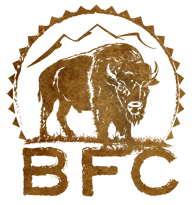For Immediate Release:
February 17, 2004:
Contact:
Dan Brister (406) 646-0070
West Yellowstone, Montana - Riding snowmobiles and firing cracker rounds (explosive shells fired from shotguns), agents with the Montana Department of Livestock (DOL), the Montana Department of Fish, Wildlife, and Parks, the National Park Service, and the U.S. Forest Service chased a mixed herd of buffalo cows calves, yearlings, and two-year-olds more than four miles into the trap at Horse Butte.
The animals had been grazing near the Madison River on the Gallatin National Forest, in an ecologically sensitive area where livestock are never present.
After their capture, the buffalo were loaded onto trailers and transported to a different trap at Duck Creek, where they may be tested for exposure to brucellosis.
All pregnant cows and all other positive-testing bison will be slaughtered. Negative-testing bison may be released.
The test, which determines the presence of antibodies rather than infection, is an unreliable indicator. “It’s like trying to eradicate chickenpox by killing everyone who has ever been exposed to them,” stated BFC spokesperson Dan Brister.
There has never been a documented case of brucellosis transmission from wild bison to livestock.
After capturing the 18 buffalo, the agents attempted to capture a lone bull who has been grazing beside highway 191 on Cougar Creek since November. The agents, who closed down the highway three separate times as they chased the bull toward the trap, were unable to capture him.
“Today’s actions highlight the DOL’s unwillingness to use common sense and sound science,” stated BFC spokesperson Josh Osher. “Livestock agents have no right to harass and kill an iconic wildlife species like the Yellowstone buffalo.”
Today’s operation is the first capture since last March, when the Park Service captured and slaughtered 231 buffalo in Yellowstone National Park. Two bulls were shot earlier this season, one on February 5 and one in November.
The Buffalo Field Campaign (BFC) is the only group working in the field, everyday, to stop the slaughter of Yellowstone's wild buffalo. Volunteers defend the buffalo on their traditional winter habitat and advocate for their protection.







